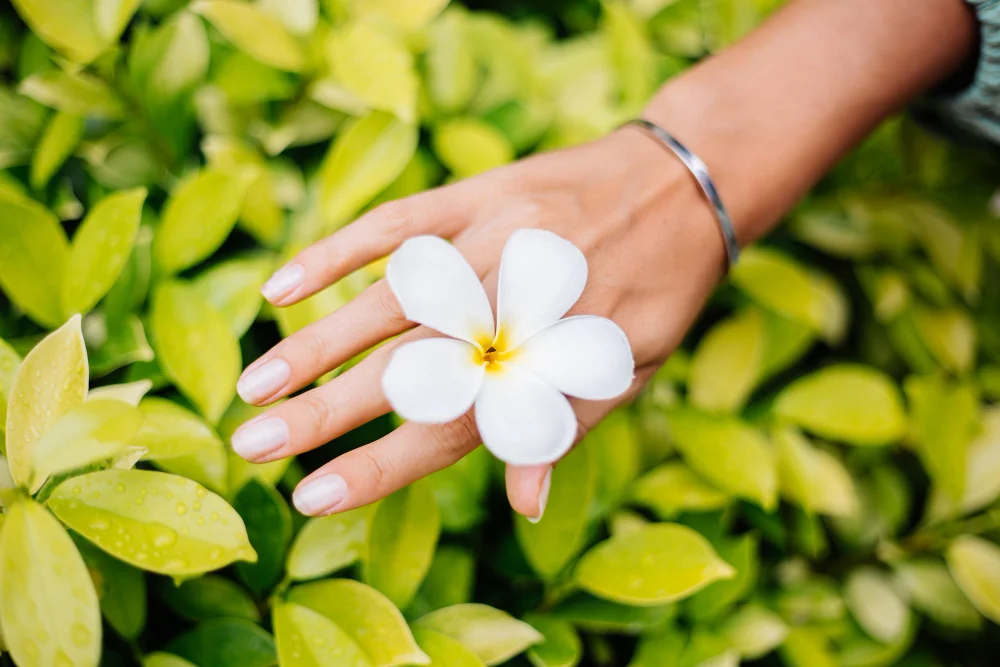Have you ever looked down at your nails and felt that little jolt of panic that comes from seeing an unexpected greenish stain?
I still remember the first time it happened to me—during a particularly exhausting month when I was juggling travel, work, and a house move. I had been wearing acrylic extensions for far too long, convincing myself that “I’ll let them breathe next week.” By the time I finally removed them, a patch of swampy green stared back at me. For a second, I genuinely thought I’d grown mould.
What I discovered that day—and through a conversation with a podiatrist friend—is that green nails are far more common than we realise. They’re usually caused not by dirt or poor hygiene, but by a very specific type of bacteria called Pseudomonas aeruginosa. These bacteria love damp, oxygen-poor environments, making our nail beds the perfect playground if moisture gets trapped under a nail or extension.
This matters not just for appearance, but because untreated infections can spread, damage the nail, and become painful. Learning how to treat green nails at home is not only possible, but essential—especially when you catch them early.
In this article, I’m combining personal experience, expert insights, and evidence-based strategies to help you understand what’s happening and how to safely treat it at home.
What Causes Green Nails? (The Real Reason Behind the Green Colour)
When I called my podiatrist friend, Dr Sarah Whitcombe—a UK-based practitioner specialising in nail and skin infections—she immediately reassured me:
“People panic when they see that green stain, but what they don’t realise is that it’s simply pigment produced by Pseudomonas. It doesn’t mean the nail is dead or ruined. It just means moisture got trapped long enough for the bacteria to thrive.”
Common Causes of Pseudomonas Nail Infections
- Wearing acrylics or gel extensions for too long
- Lifting or detached artificial nails
- Constant exposure to water (hairdressers, swimmers, cleaners)
- Aggressive manicures that separate the natural nail from the nail bed
- Tight shoes that trap moisture around toenails
A 2020 review published in the Journal of Clinical Microbiology found that Pseudomonas aeruginosa thrives in warm, humid environments and spreads particularly easily on nails that are already lifting or damaged. This aligns perfectly with my own accidental “experiment”—weeks of ignored extensions and constant handwashing.
How to Treat Green Nails at Home (Evidence-Based Methods That Actually Work)
Before we dive into treatments, let me echo what every expert emphasises: if your nail is painful, oozing, or the green area is spreading rapidly, see a doctor. Home treatment is effective for mild-to-moderate cases.
Below are methods I’ve personally tested, combined with expert-backed advice.
1. Remove All Nail Enhancements Immediately
The first thing I did—reluctantly—was remove my acrylics. This step is crucial because bacteria thrive in the gap between the natural nail and the enhancement.
How to do it safely:
- Soak in acetone (not peel off)
- Gently remove without scraping the natural nail
- Keep the nail exposed to air
Dr Whitcombe emphasised:
“Pseudomonas hates oxygen. The moment you let the nail breathe, you’re already halfway to healing.”
2. Clean the Nail With Soap and Warm Water Daily
Simple, yes—but incredibly effective. The goal is to remove surface bacteria and keep the area dry.
Use an antibacterial soap if possible, but avoid harsh scrubbing that damages the nail.
3. Try a Vinegar Soak (Backed by Research)
You’ll find hundreds of online remedies, but very few are supported by microbiological studies. Vinegar, surprisingly, is one of them.
A 2019 study published in Infectious Disease Reports highlighted that acetic acid (found in household vinegar) inhibits the growth of Pseudomonas.
How to use it:
- Mix 1 part white vinegar with 4 parts warm water
- Soak for 10 minutes, once daily
- Pat completely dry (don’t trap moisture!)
4. Use 70% Isopropyl Alcohol (My Personal Go-To)
When I treated my own green nail, isopropyl alcohol worked faster than vinegar in reducing discolouration.
How to apply:
- Dab a cotton pad soaked in alcohol over the nail
- Let it air-dry
- Repeat 1–2 times daily
Isopropyl alcohol rapidly dehydrates the bacteria’s environment, slowing growth.
5. Apply a Topical Antibacterial Treatment
Over-the-counter antibacterial solutions like chlorhexidine, betadine, or gentamicin drops can be used for stubborn cases.
Dr Whitcombe recommends:
“Topical antibiotics can help in persistent infections, but be careful not to overuse them. They should be a short-term solution, not a default treatment.”
6. Keep the Nail Completely Dry
This might be the least exciting but most critical part of treatment.
Daily habits that help:
- Wear gloves while washing dishes
- Dry hands thoroughly after showering
- Avoid swimming pools until the colour fades
- Change socks frequently if it’s on your toenail
Moisture is the fuel that keeps the infection going.
How Long Does It Take for a Green Nail to Heal?
After speaking with experts and testing the methods myself, here’s what you can realistically expect:
- Mild cases: 5–10 days to clear
- Moderate cases: 2–4 weeks
- Severe cases: May require prescription antibiotics
The green stain usually fades gradually as the bacteria die. In some cases, a faint tint remains until the nail grows out.
A dermatology study from King’s College London notes that the nail grows on average 3 mm per month on fingers and 1 mm per month on toes—so full renewal takes time.
Can Green Nails Spread?
Technically, yes—but not like a cold.
The bacteria can transfer to other nails if the same trapped-moisture conditions exist. For instance, salons sometimes see cross-contamination when tools aren’t disinfected properly.
At home, avoid:
- Sharing nail tools
- Using contaminated nail files
- Wearing extensions on other nails until the infected one heals
When You Should NOT Treat Green Nails at Home
Home treatments work best for mild infections. But stop and seek professional help if:
- The nail is painful or throbbing
- There is redness or swelling around the nail
- The green area is spreading rapidly
- You have diabetes or a compromised immune system
- The nail is lifting significantly
A GP or dermatologist may prescribe oral antibiotics or professionally clean the nail.
How to Prevent Green Nails in the Future
After my incident, I changed a few habits. These small tweaks make a massive difference:
1. Don’t Over-Wear Nail Enhancements
Give your nails a break every 2–3 weeks.
2. Avoid Aggressive Filing Under the Nail
This creates space for bacteria to enter.
3. Choose a Qualified Nail Technician
Ask how they sanitise tools—don’t be shy.
Professional salons follow guidelines from organisations like the British Association of Foot Health Professionals.
4. Keep Nails Dry as Much as Possible
Especially after long baths or swimming.
5. Strengthen Your Natural Nails
A healthier nail plate lifts less and traps less moisture.
FAQs
What causes green nails?
Green nails are caused by Pseudomonas aeruginosa, a bacteria that grows when moisture becomes trapped under the nail.
Can I paint over a green nail?
No. Covering it traps more moisture and slows healing.
Is a green nail contagious?
Slightly—it spreads only if similar damp conditions exist.
Can vinegar cure green nails?
Vinegar helps reduce bacteria due to its acetic acid content, but works best for mild cases.
When should I see a doctor for a green nail?
If it becomes painful, spreads, or doesn’t improve within a week.
Final Thoughts (And a Gentle Nudge to Take Action)
Green nails can feel embarrassing, but they’re incredibly common—and very treatable when caught early. The combination of removing enhancements, keeping the nail dry, and applying simple antibacterial treatments can make a dramatic difference.
If you’ve dealt with green nails before, what home treatments worked for you? And if you’re trying the methods from this guide, I’d love to hear how your healing progresses. Your experience might help someone else facing that same moment of panic over an unexpected green tint.
Feel free to share your story or ask questions below!
Read Also: How Physiotherapy Helps Swimming Injuries




